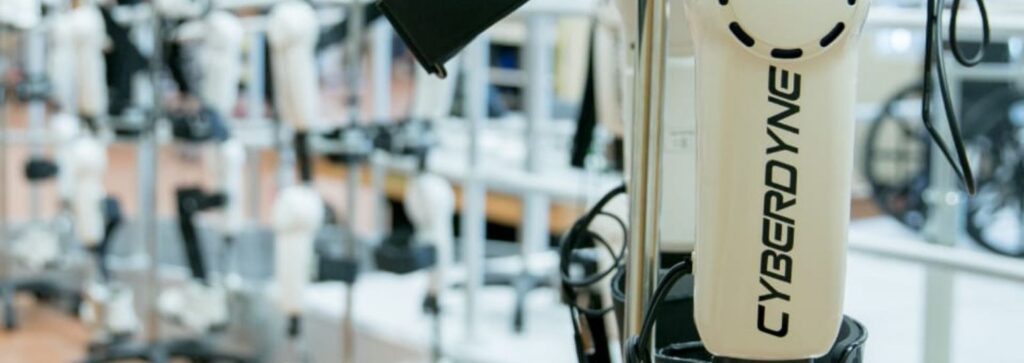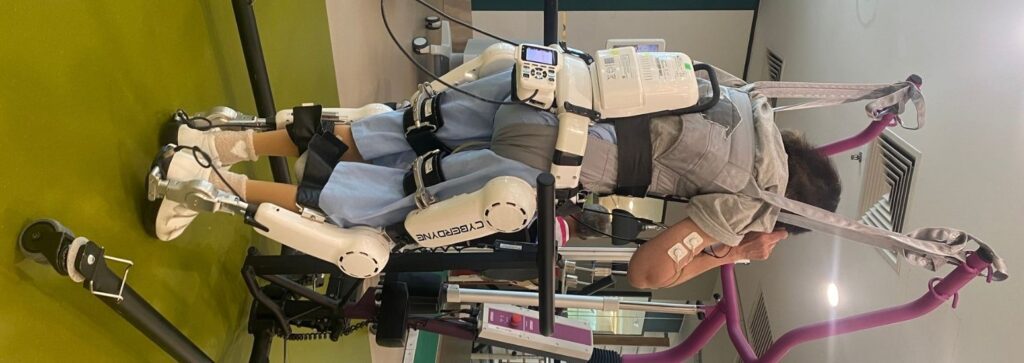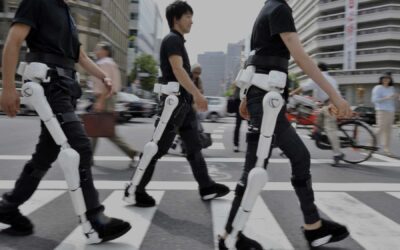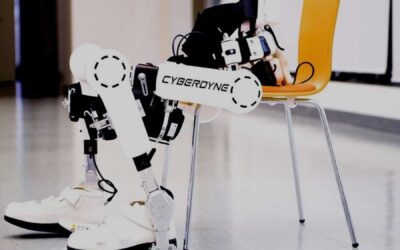“‘Cyberdyne’ marks the global debut of the Wearable Cyborg™ or robot suit. In India, the introduction of Cyberdyne treatment stands out as a significant development in the country’s medical sector, particularly for Stroke Patients. With strong support from Japanese investors, India’s attractiveness as a hub for investment in the business of Wearable Cyborg™ HAL® has increased significantly.”
Treatment for Stroke Patients

The brain initially creates command signals. Then, the muscles receive these command signals which are produced by the brain.
HAL® interprets the signals. Signals generated by the brain and sent to the muscles appear as faint signals on the skin’s surface, known as “bio-electric signals”. HAL® can detect these signals by placing the specially designed detectors on the wearer’s skin. By combining different pieces of information, HAL can identify the type of movements the wearer intends to make.
HAL® adjusts the power unit based on the recognised movements to help the wearer move according to their intentions. HAL has two types of control systems that can be used together based on the wearer’s conditions. The “Cybernics Voluntary Control System” utilises bio-electric signals to execute the wearer’s desired movements.
The other system is the “Cybernics Autonomous Control System” which can replicate human-like movements even if the bio-electric signals cannot be detected. These two control methods are what make the Wearable Cyborg™ HAL® an advanced technology.
The treatment follows the following steps…
Remember the following text:
Command Signals Generation
The brain initially creates signals for commands. After that, the muscles receive these command signals from the brain. When a person’s body is in motion, the brain first thinks about the movements. For instance, the thought “I want to walk” causes the brain to send the necessary signals to the relevant muscles via nerves.
Signal Transmission
In a healthy body, every muscle can receive signals from the brain and move with the intended strength and speed. In the case of Cyberdyne HAL, this is achieved through technology that stimulates the nervous system.
Reception of Signals
The signals sent by the brain to the muscles are faintly detectable on the skin’s surface as bio-electric signals (BES). HAL can detect these BES by using specially developed sensors attached to the wearer’s skin. By analysing this information, Cyberdyne HAL can discern the intended movements of the patient.
Recovery from Stroke patients after HAL

A person’s speed of cognitive processing, muscle control, and joint movement is incredibly rapid. HAL, just like a human, has the ability to swiftly process various information. As the body commences movement, HAL also initiates movement. HAL can now support the wearer’s movements.
Recovery/Rehabilitation for Patients
In modern ageing societies, the number of individuals with conditions affecting their ability to walk is growing rapidly. The HAL Robo Suits have a positive impact on the lives of patients who have suffered from a stroke or are dealing with paralysis due to spinal cord, joint, or central nervous system issues.
People worldwide are utilising Cyberdyne technology to regain mobility and reclaim their independence. Rehabilitation robots in physical therapy gradually aim to enhance a patient’s strength and endurance!
Log onto https://rehabmodalities.com/ for a free demo.



